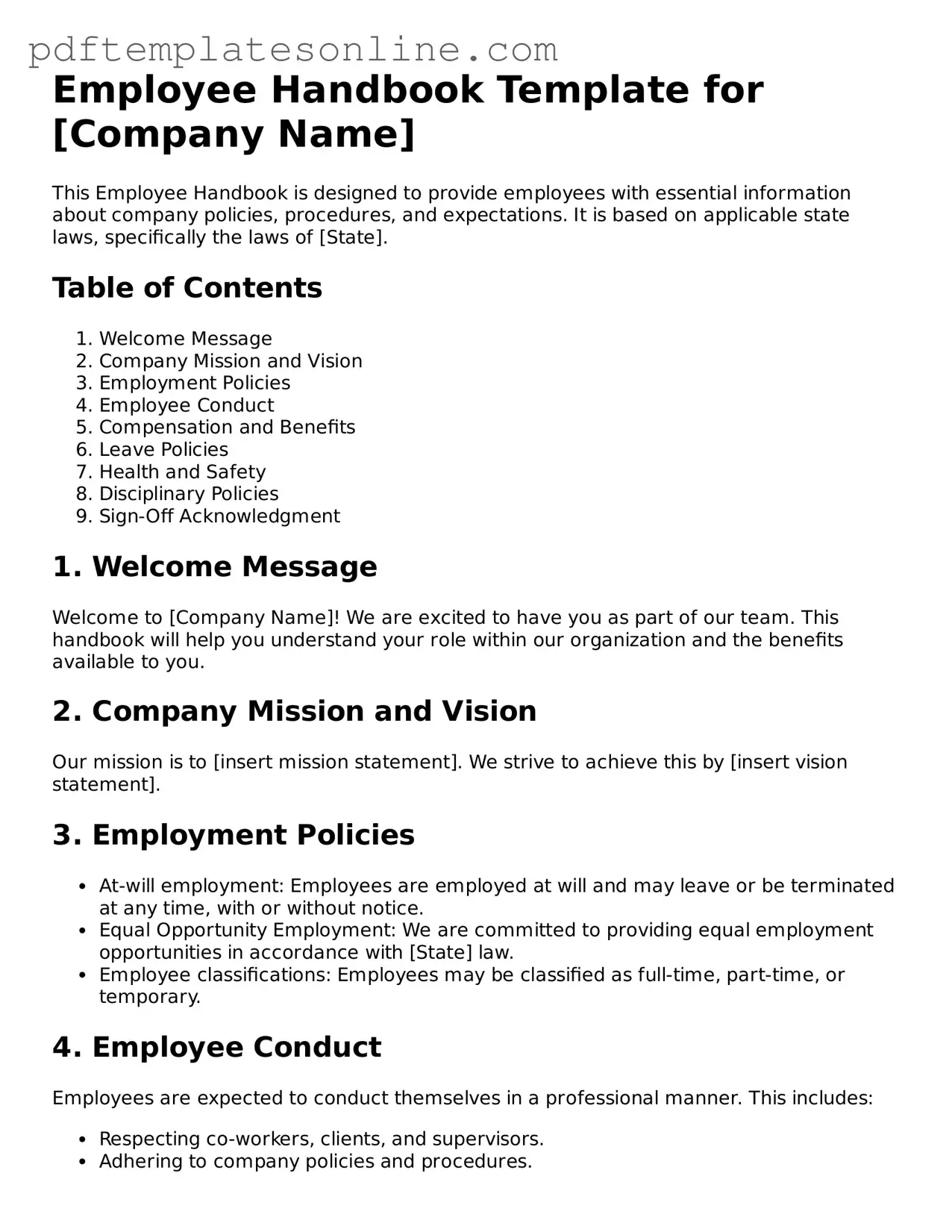When filling out the Employee Handbook form, many individuals overlook important details that can lead to complications later on. One common mistake is failing to read the instructions carefully. Each section of the form may have specific requirements, and skipping over these can result in incomplete or incorrect submissions.
Another frequent error is neglecting to provide accurate personal information. It's essential to double-check names, addresses, and contact numbers. Mistakes in this area can lead to communication issues and delays in processing important documents.
People often forget to sign and date the form. A signature is not just a formality; it indicates that the employee acknowledges and agrees to the policies outlined in the handbook. Without this, the form may be considered invalid.
Additionally, some individuals fail to update their information when changes occur. Life events, such as a change of address or marital status, should be reflected on the form. Keeping this information current ensures that the employer can reach the employee when necessary.
Another mistake involves not asking questions when something is unclear. If an employee is uncertain about a section of the form, they should seek clarification. Ignoring confusion can lead to misunderstandings about workplace policies.
Some employees may also skip reviewing the Employee Handbook itself before completing the form. Understanding the contents of the handbook is crucial, as it contains important information about rights and responsibilities. A lack of familiarity can lead to unintentional violations of company policies.
Lastly, procrastination can be a significant pitfall. Waiting until the last minute to fill out the form can lead to rushed submissions, increasing the likelihood of errors. It's always best to take the time to complete the form thoughtfully and accurately.
